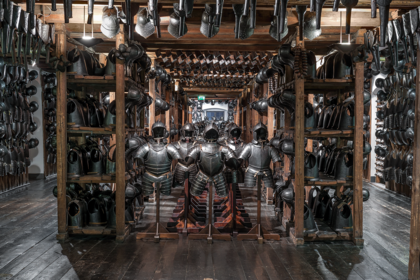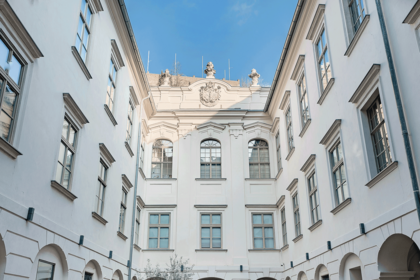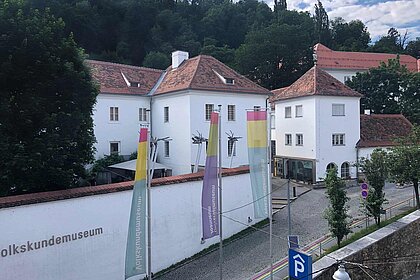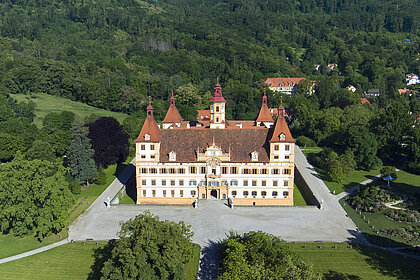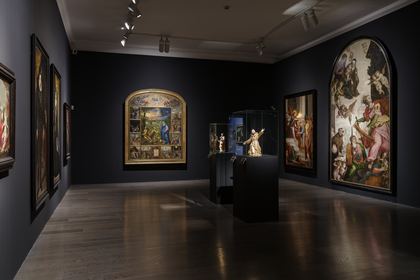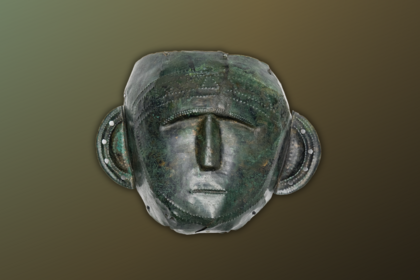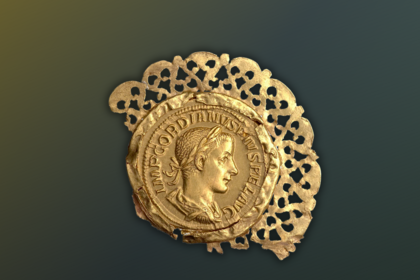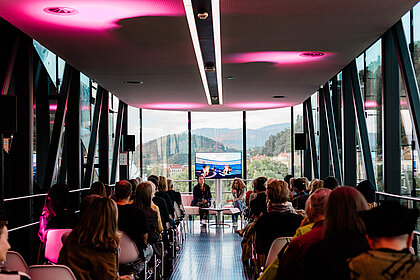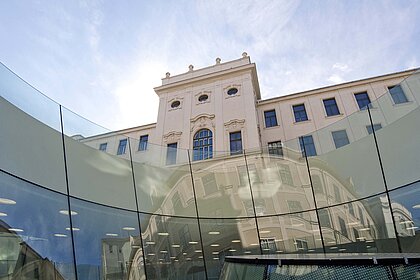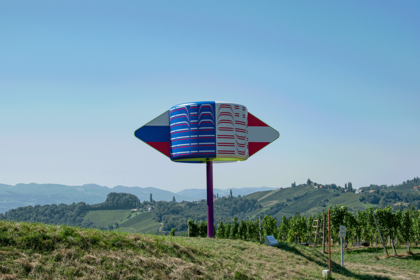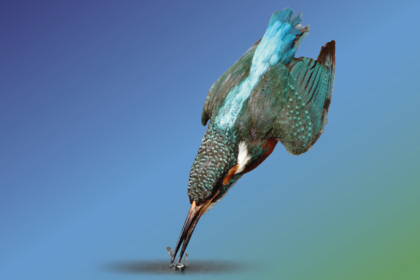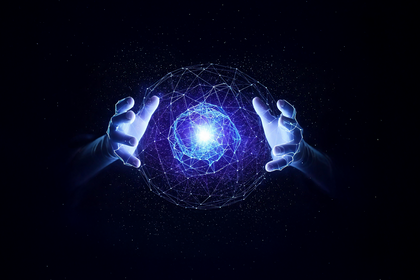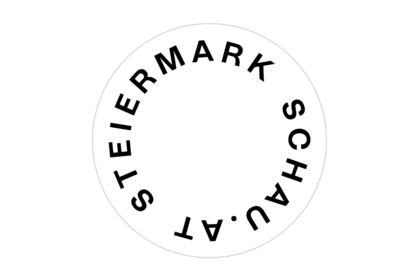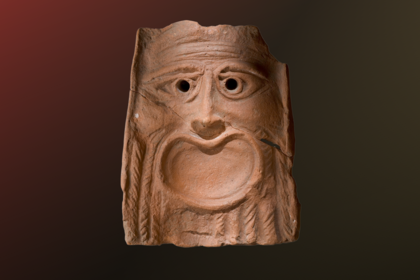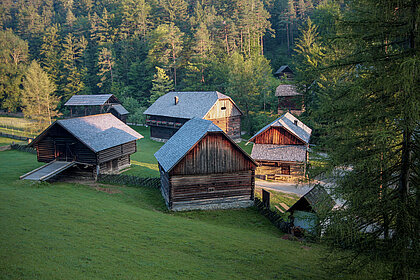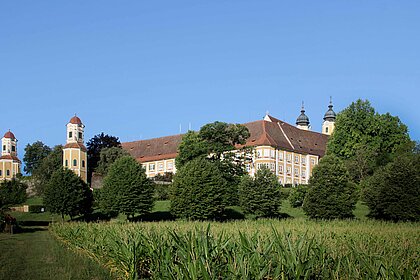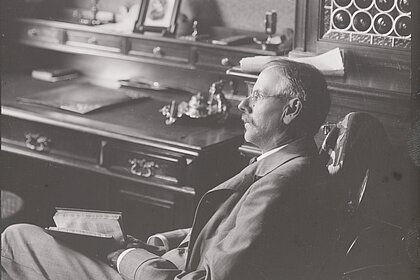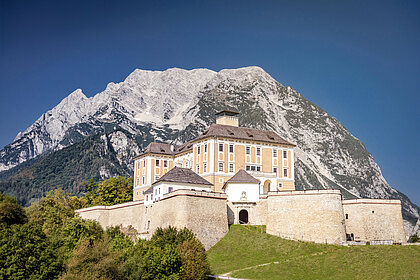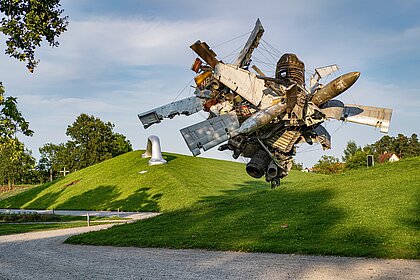Jojo Gronostay
The Elephants
Image Credits
Duration
04.10.2025 - 01.03.2026
Opening
03.10.2025 19:00
Location
Neue Galerie Graz, studio
Curators
Marlies Schöck
Show all
About the
Exhibition
For decades, the textile industry has shaped global trade and commodity flows, resulting in far-reaching ecological, social, and economic consequences. Jojo Gronostay uses these issues as inspiration for his art.
Drawing inspiration from Salvador Dalí's 1948 painting of the same name, in which the Spanish artist contrasts the elephant as a symbol of strength and domination with long, fragile-looking limbs, Gronostay uses the stilt walkers in the video to allude to the long history of trade between Europe and Africa, as well as the liminal space.
When second-hand clothing first arrived in Ghana in the 1970s, locals could not believe that such high-quality garments had been thrown away. They therefore assumed that the owners had died. These items were called 'Obroni wawu', the Ghanaian term for 'dead white men's clothes'. Multidisciplinary artist Jojo Gronostay founded the fashion label DWMC (Dead White Men's Clothes) to address issues of neo-colonialism, identity, and the value system of the Western world. He created a collection of used garments sourced exclusively from the Kantamanto Market in Accra, Ghana — one of the largest trading centres for second-hand goods — and reintegrated them into the Western context, emphasising that this is an art project.
Like the stilt walkers dressed in DWMC clothing in this video, who act as spiritual figures between two worlds in many West African cultures – the here and now, life and oblivion, heaven and earth – clothing encounters a state of limbo when it remains unused.
The prints on display in the exhibition are the result of floor recordings made at various locations in Accra using a hand scanner while walking. When it rains, people throw clothing onto the paths to absorb moisture and mud, which makes walking in parts of the Kantamanto market unsafe and unstable. The clothing, which soon takes on earthy tones, is in a state of transition: no longer wearable, yet not quite gone; no longer acceptable, yet not quite discarded. The intertwined search for the identity of both object and human being meanders between levels.
Glimpses
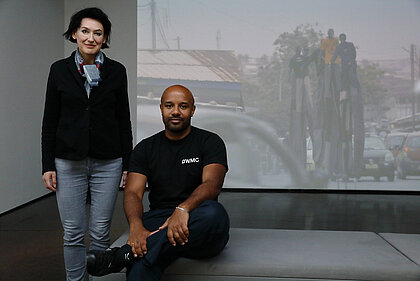
Image Credits
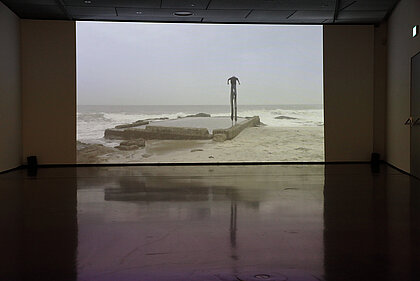
Image Credits
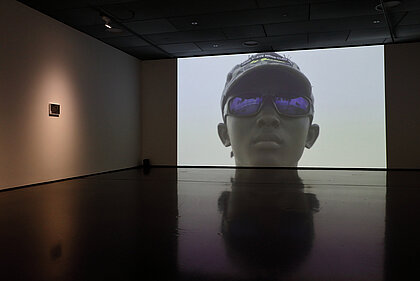
Image Credits
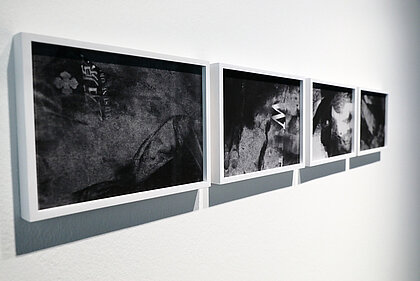
Image Credits
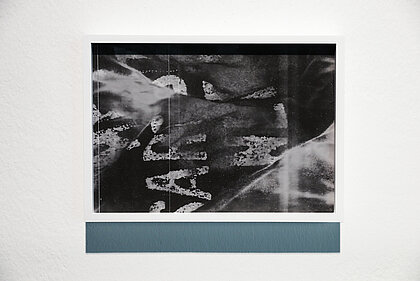
Image Credits
